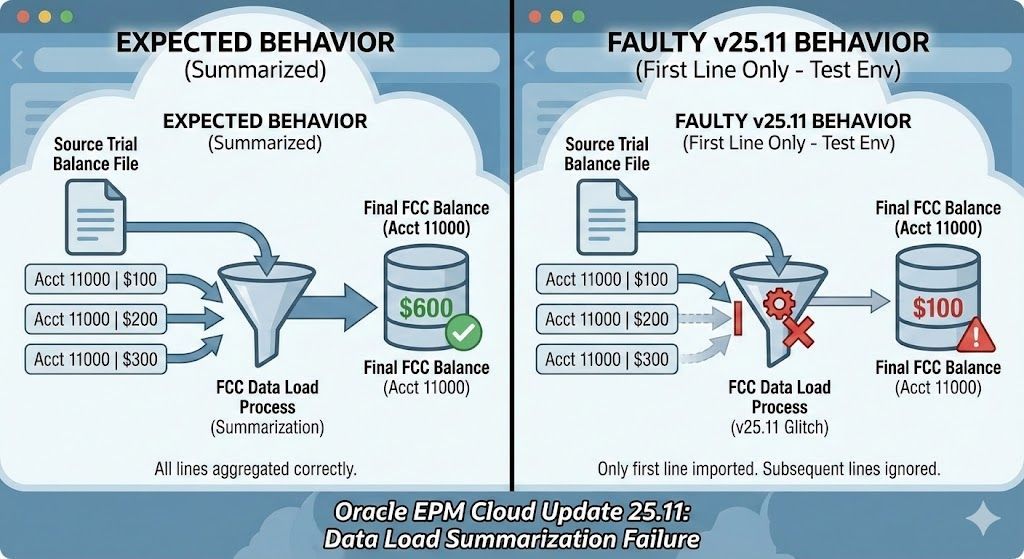The Hidden Impact of Deleting Profiles in Oracle Account Reconciliation
Nadia Lodroman • 6 February 2025
Listen to Tresora and Ledgeron's chatting about this blog post:
Transaction Matching Matters

Deleting a profile in Oracle Account Reconciliation seems straightforward enough, right? Just a few clicks and it's gone. However, the implications differ significantly depending on whether that profile has transaction matching embedded or not. Understanding these differences is crucial for maintaining data integrity and ensuring smooth reconciliation processes.
This post will explore the distinct consequences of deleting profiles with and without transaction matching, highlighting potential pitfalls and best practices.
Deleting a Profile Without Transaction Matching:
When you delete a profile that doesn't utilise transaction matching, the impact is relatively localised. Essentially, you're removing the profile's configuration and any associated reconciliations. Here's a breakdown:
- Reconciliation Data: The reconciliation data associated with the profile is typically deleted or archived, depending on your system configuration. This means historical reconciliation information for that profile will no longer be readily accessible.
- Profile Configuration: The profile settings, including account assignments, formats, and other parameters, are removed.
- Impact on Other Profiles: Deleting a non-matching profile generally has minimal impact on other profiles, unless there are shared dependencies like common data sources.
Key Considerations:
- Data Retention Policies: Ensure you comply with your organization's data retention policies before deleting any profile, even if it doesn't use transaction matching. You might need to export or archive the reconciliation data for auditing purposes.
- User Access: Review user access to the profile before deletion. Ensure no one is actively using the profile for reconciliation activities.
Deleting a Profile With Transaction Matching:
Deleting a profile with transaction matching is a different story. The impact is far more widespread and requires careful planning. Here's why:
- Matching Data: The most significant consequence is the impact on the matching data. Deleting the profile can lead to the loss of matched transactions, potentially disrupting reconciliation processes for other profiles that rely on that matching data. This is because matching configurations and rules are often tied to the profile.
- Open Reconciliations: If the profile has any open reconciliations, deleting it can leave those reconciliations in an inconsistent state. The system might struggle to reconcile transactions without the associated matching data.
- Dependent Profiles: Other profiles might be using the same matching configurations or data sources as the profile you're deleting. This can create a ripple effect, impacting reconciliations across multiple profiles.
- Integration Issues: If the profile is integrated with other systems, deleting it could disrupt data flows and cause inconsistencies in those systems as well.
Key Considerations:
- Dependencies: Thoroughly analyze all dependencies before deleting a matching profile. Identify any other profiles or processes that rely on the same matching data or configurations.
- Data Migration: If you need to delete the profile, consider migrating the matching data to another profile or archiving it separately. This will prevent data loss and ensure the integrity of other reconciliations.
- Testing: After deleting a matching profile, rigorously test all related reconciliation processes to ensure everything is working as expected.
- Communication: Communicate the planned deletion to all affected users and stakeholders well in advance.
Best Practices for Deleting Profiles (Regardless of Matching):
- Document Everything: Maintain clear documentation of all profiles, including their configurations, dependencies, and associated reconciliation data.
- Plan and Test: Before deleting any profile, create a detailed plan and test the impact of the deletion in a non-production environment.
- Backup: Always back up your reconciliation data before making any significant changes, including profile deletions.
- Consult Oracle Support: If you're unsure about the implications of deleting a profile, consult Oracle support for guidance.
By understanding the potential impacts and following best practices, you can minimise disruptions and maintain the integrity of your reconciliation processes. Don't underestimate the power of planning and testing – it can save you from a world of reconciliation headaches!






